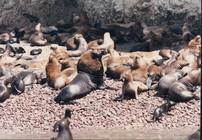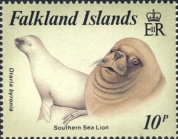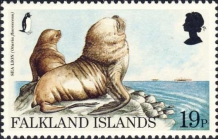RAS taxon details
Otaria byronia (de Blainville, 1820)
Otaria flavescens Shaw, 1800 · unaccepted
marine
Not documented
RAS (2025). Otaria byronia (de Blainville, 1820). Accessed at: https://ras.biodiversity.aq/aphia.php/aphia.php?p=taxdetails&id=344630 on 2025-09-11
RAS (Eds.) (2025). Register of Antarctic Species. Otaria byronia (de Blainville, 1820). Accessed at: https://ras.biodiversity.aq/aphia.php?p=taxdetails&id=344630 on 2025-09-11
Date
action
by
source of synonymy
van der Land, J. (ed). (2008). UNESCO-IOC Register of Marine Organisms (URMO). , available online at http://www.marinespecies.org/urmo/ [details]
ecology source Looby, A.; Erbe, C.; Bravo, S.; Cox, K.; Davies, H. L.; Di Iorio, L.; Jézéquel, Y.; Juanes, F.; Martin, C. W.; Mooney, T. A.; Radford, C.; Reynolds, L. K.; Rice, A. N.; Riera, A.; Rountree, R.; Spriel, B.; Stanley, J.; Vela, S.; Parsons, M. J. G. (2023). Global inventory of species categorized by known underwater sonifery. <em>Scientific Data.</em> 10(1). (look up in IMIS), available online at https://doi.org/10.1038/s41597-023-02745-4 [details]
ecology source Looby, A.; Erbe, C.; Bravo, S.; Cox, K.; Davies, H. L.; Di Iorio, L.; Jézéquel, Y.; Juanes, F.; Martin, C. W.; Mooney, T. A.; Radford, C.; Reynolds, L. K.; Rice, A. N.; Riera, A.; Rountree, R.; Spriel, B.; Stanley, J.; Vela, S.; Parsons, M. J. G. (2023). Global inventory of species categorized by known underwater sonifery. <em>Scientific Data.</em> 10(1). (look up in IMIS), available online at https://doi.org/10.1038/s41597-023-02745-4 [details]
| Language | Name | |
|---|---|---|
| English | South American sea lion [from synonym] | [details] |
To Barcode of Life (from synonym Otaria flavescens Shaw, 1800)
To Barcode of Life (2 barcodes)
To Biodiversity Heritage Library (47 publications) (from synonym Otaria flavescens Shaw, 1800)
To Biodiversity Heritage Library (52 publications)
To European Nucleotide Archive, ENA (Otaria byronia)
To GenBank (336 nucleotides; 149 proteins)
To GenBank (336 nucleotides; 149 proteins) (from synonym Otaria flavescens Shaw, 1800)
To Global Biotic Interactions (GloBI) (from synonym Otaria flavescens Shaw, 1800)
To IUCN Red List (Least Concern)
To ITIS
To Barcode of Life (2 barcodes)
To Biodiversity Heritage Library (47 publications) (from synonym Otaria flavescens Shaw, 1800)
To Biodiversity Heritage Library (52 publications)
To European Nucleotide Archive, ENA (Otaria byronia)
To GenBank (336 nucleotides; 149 proteins)
To GenBank (336 nucleotides; 149 proteins) (from synonym Otaria flavescens Shaw, 1800)
To Global Biotic Interactions (GloBI) (from synonym Otaria flavescens Shaw, 1800)
To IUCN Red List (Least Concern)
To ITIS


